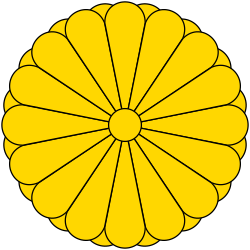| Premodern Japan | |
|---|---|
 | |
| Daijō-daijin | |
| Minister of the Left | Sadaijin |
| Minister of the Right | Udaijin |
| Minister of the Center | Naidaijin |
| Major Counselor | Dainagon |
| Middle Counselor | Chūnagon |
| Minor Counselor | Shōnagon |
| Eight Ministries | |
| Center | Nakatsukasa-shō |
| Ceremonial | Shikibu-shō |
| Civil Administration | Jibu-shō |
| Popular Affairs | Minbu-shō |
| War | Hyōbu-shō |
| Justice | Gyōbu-shō |
| Treasury | Ōkura-shō |
| Imperial Household | Kunai-shō |
The Yōrō Code (養老律令, Yōrō-ritsuryō) was one iteration of several codes or governing rules compiled in the early Nara period in Classical Japan. It was compiled in 718, the second year of the Yōrō regnal era by Fujiwara no Fuhito et al., but not promulgated until 757 under the regime of Fujiwara no Nakamaro under Empress Kōken. [1] [2]
Contents
- Overview
- State of preservation
- Tang dynasty model
- Period in force
- See also
- Explanatory notes
- Citations
- Further reading
- External links
The penal code portions (ritsu) were largely lost, although they have been reconstructed. The content of the civil code portions (ryō) is preserved nearly fully, copied out in later texts. [1] [2]